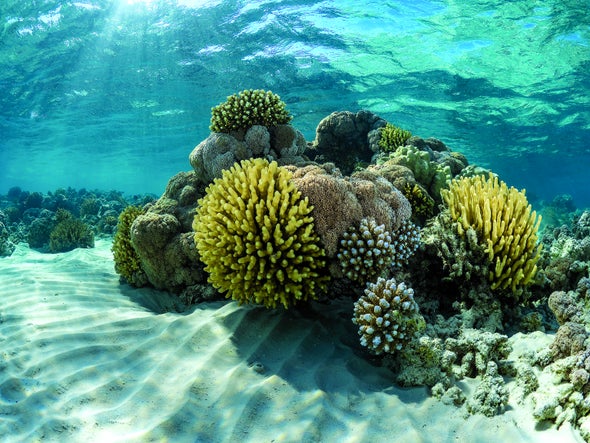Are you looking for a great coral that won’t be too hard to care for and will look great in your tank? Euphyllia ancora, or hammer coral, might be what you’re looking for. They build their own stony coral skeleton, have bold, beautiful, flowing polyps, are photosynthetic, can be fragged relatively easily, and will grow even faster if fed, making this popular large polyp stony coral species an excellent addition to your tank.Some parts of the Indian and Pacific Oceans contain hammer corals. E. ancora colonies can reach a size of around a yard in their natural habitat. The majority of saltwater aquarium colonies are significantly smaller. Unfortunately, the species is listed as vulnerable on the endangered species list because its natural range has significantly decreased over the past few decades.

Check the Copper Level in Water –
The good news, if any, is that this coral’s branching morph can be easily fragged, so wild collection should not be necessary. In a saltwater aquarium, caring for Hammer corals requires moderate skill. Besides that, euphyllia corals Ancora, like the majority of other coral species, requires stable water conditions in reef tanks, is intolerant of significant changes in water quality, and is sensitive to almost any copper level in the water. Calcium and alkalinity are two very important water parameters that will influence your coral’s growth because they are large polyp stony corals. If the calcium levels are too low, this coral will start to die. A calcium level of approximately 400 ppm is ideal. Most specialists keep up with adequate calcium levels.
Corals Need Space for Development –
Give hammer corals a space to develop out and to get them far from different corals. In most reef tank systems, hammer corals perform best when placed near the bottom or middle of the tank. That assumes strong, standard lighting for a reef aquarium. The coral should be moved up in the water column if you have less intense lights. When it comes to where it should go in your tank, this particular species of coral isn’t particularly picky. The real trick would be to stay away from the extremes. Stay away from places with a lot of light or a lot of current. The Birds Nest and other light-hungry SPS are best suited for those areas.
Avoid Bleaching and Too Much Lights –
Additionally, avoid areas with too low currents or too much darkness. They for the most part require a smidgen more light than low like mushroom coral, or non-photosynthetic species like the unexpectedly named Sun Coral, however not generally so much light as a few other all the more eager for light species. The soft, fleshy polyps run the risk of being damaged (and infected) by swift currents. Bleaching will occur under bright lights. The poor coral will wither and starve to death if there is insufficient light. However, that should provide you with a fairly extensive area of suitable reef tank real estate for placing them.
Limitations in Flow –
Hammer corals can thrive in the middle of your tank because they only require a small amount of light for photosynthesis. The key is to have moderate flow. Not to an extreme, not excessively little, yet spot on. The polyps ought to move with the current, but not so much that they are constantly bent over their skeleton because of the pressure. Worst case scenario, excessive flow will tear the polyps and prevent their extension Therefore, limit their flow.

